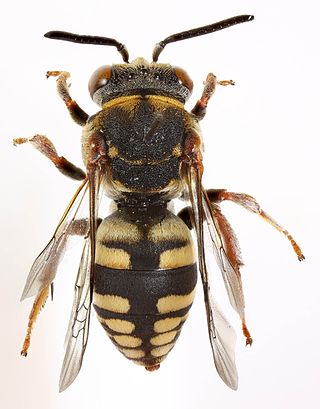Derbyshire Wildlife Trust is one of 46 local Wildlife Trusts around the UK working to promote and protect local wildlife. It covers the whole of Derbyshire and was founded in 1962 in response to environmental threats to the local countryside, since when it has continued to grow. The trust is now based at East Mill on the River Derwent in the town of Belper, Derbyshire. It is a registered charity, supported by more than 14,000 members and over 500 volunteers.

The Wildfowl & Wetlands Trust (WWT) is an international wildfowl and wetland conservation charity in the United Kingdom.

Redgrave and Lopham Fens is a 127 hectare biological Site of Special Scientific Interest between Thelnetham in Suffolk and Diss in Norfolk. It is a national nature reserve, a Ramsar internationally important wetland site, a Nature Conservation Review site, Grade I, and part of the Waveney and Little Ouse Valley Fens Special Area of Conservation. It is managed by the Suffolk Wildlife Trust.

CPRE, The Countryside Charity, formerly known by names such as the Council for the Preservation of Rural England and the Council for the Protection of Rural England, is a charity in England with over 40,000 members and supporters. Formed in 1926 by Patrick Abercrombie to limit urban sprawl and ribbon development, the CPRE claims to be one of the longest running environmental groups in the UK. CPRE campaigns for a "sustainable future" for the English countryside. They state it is "a vital but undervalued environmental, economic and social asset to the nation." They aim to "highlight threats and promote positive solutions." They campaign using their own research to lobby the public and all levels of government.

The Cotswold Water Park is the United Kingdom's largest marl lake system, straddling the Wiltshire–Gloucestershire border, north-west of Cricklade and south of Cirencester. There are 180 lakes, spread over 42 square miles (110 km2).
Save the Rhino International (SRI) is a UK-based conservation charity. It is Europe's largest single-species rhino charity, in terms of funds raised, grants made, and profile and positioning. SFI began fundraising for in situ rhino conservation projects in 1992 and was formally registered as a charity in 1994. One of SRI's founder patrons was the British writer and humorist Douglas Adams, who also was known to be a conservation movement enthusiast.

Austropotamobius pallipes is an endangered European freshwater crayfish, and the only crayfish native to the British Isles. Its common names include white-clawed crayfish and Atlantic stream crayfish.
Wildwood Trust is a woodland discovery park in Herne, near Canterbury in Kent, England. It features over fifty species of native British animals such as deer, badgers, wild boar, wolves and brown bear. It is located on the main road A291 between Herne Bay and Canterbury.

Colne Estuary is a 2915 hectare biological and geological Site of Special Scientific Interest near Brightlingsea in Essex. It is also a Nature Conservation Review site, a National Nature Reserve, a Ramsar wetland site of international importance, a Special Protection Area, a Special Area of Conservation, and a Geological Conservation Review site. Three areas in the site are managed by the Essex Wildlife Trust, Colne Point, Fingringhoe Wick and Howlands Marsh.

The great raft spider or fen raft spider is a European species of spider in the family Pisauridae. Like other Dolomedes spiders, it is semiaquatic, hunting its prey on the surface of water. It occurs mainly in neutral to alkaline, unpolluted water of fens and grazing marsh.

Saving THE Planet is a season of nature documentaries with a conservation theme, screened on BBC Television in 2007 to mark the 50th anniversary of its specialist factual department, the BBC Natural History Unit.

A wet woodland is a type of plant community. It is a biodiversity habitat in the United Kingdom as part of the British National Vegetation Classification system.
The Greenwich Peninsula Ecology Park is a park situated along the River Thames in the Greenwich Peninsula in South London. The park reflects the nature of the original marshland on the peninsula. The park provides a haven for many different species of bird, plants and bugs and acts as an important brownfield land to control urban sprawl. The park is a partnership project of Homes and Communities Agency (HCA) and now managed by The Conservation Volunteers (TCV). The area of the park is 11 hectares and is half aquatic and half terrestrial. Development was completed in 2000 and the park opened to public in 2002. In April 2011 the Trust took on the management of a new site nearby, the Meantime Nursery, with aims to create on vacant development land a resource for the community and for nature conservation. The park is a Site of Borough Importance for Nature Conservation, Grade I.

Barnby Broad and Marshes is a Site of Special Scientific Interest (SSSI) in the Waveney district of the English county of Suffolk. The site is 189.6 hectares in size. It is in the parishes of North Cove and Barnby, located between Beccles and Lowestoft in the north of the county. The site is bordered on its southern edge by the East Suffolk railway line and to the north by the River Waveney. It is a Special Area of Conservation, a Special Protection Area under the EC Birds Directive, and a Ramsar internationally important wetland site. There are two Suffolk Wildlife Trust nature reserves in the site, Castle Marshes and North Cove.

Peoples Trust for Endangered Species (PTES) is a charitable organisation registered in England and Wales. It exists to promote the conservation of rare or declining species and habitats in the UK and worldwide through monitoring, public engagement, education, and through the funding of conservation projects and research. It also owns and manages two nature reserves. As of April 2015, PTES has 16 employees, five trustees and coordinates around 24,000 volunteers in the UK. PTES relies on donations from the general public and grants from trusts and foundations to continue its work - it receives no core funding from the UK Government. The organisation has registered charity number 274206.

Nothophantes, the horrid ground-weaver, is a critically endangered monotypic genus of European dwarf spiders containing the single species, Nothophantes horridus. It was first described by P. Merrett & R. A. Stevens in 1995, and has only been found in an area of Plymouth smaller than 1 square kilometre (0.39 sq mi). The genus name comes from the Ancient Greek νόθος, meaning "spurious", and hyphantes, meaning "weaver". The species name comes from the Latin horridus, meaning "bristly".

Canvey Wick is a 93.2-hectare (230-acre) Site of Special Scientific Interest at the south-west corner of Canvey Island in Essex. It is owned by The Land Trust and 18.5 hectares is managed by the Royal Society for the Protection of Birds and Buglife as a nature reserve, who are working to bring more of the area under management and to improve public access.

Epeolus cruciger, the red-thighed epeolus, is a species of cuckoo bee from the family Apidae. It is endemic to Europe, where its main host is the common colletes, although other species of Colletes mining bees have been recorded as hosts.

Bishop Monkton Ings is a Site of Special Scientific Interest, or SSSI, situated east of Bishop Monkton village in North Yorkshire, England. It consists mostly of marshy, calcareous grassland, with some broadleaved woodland, and some fen alongside the two watercourses which run through the site. This varied wetland forms a habitat for a variety of plants, including the semi-parasitic marsh lousewort (Pedicularis palustris).
Karim Vahed FRES is a British entomologist. He is a professor of entomology and England manager at invertebrate conservation charity Buglife, and is an expert in crickets and bushcrickets (katydids).















